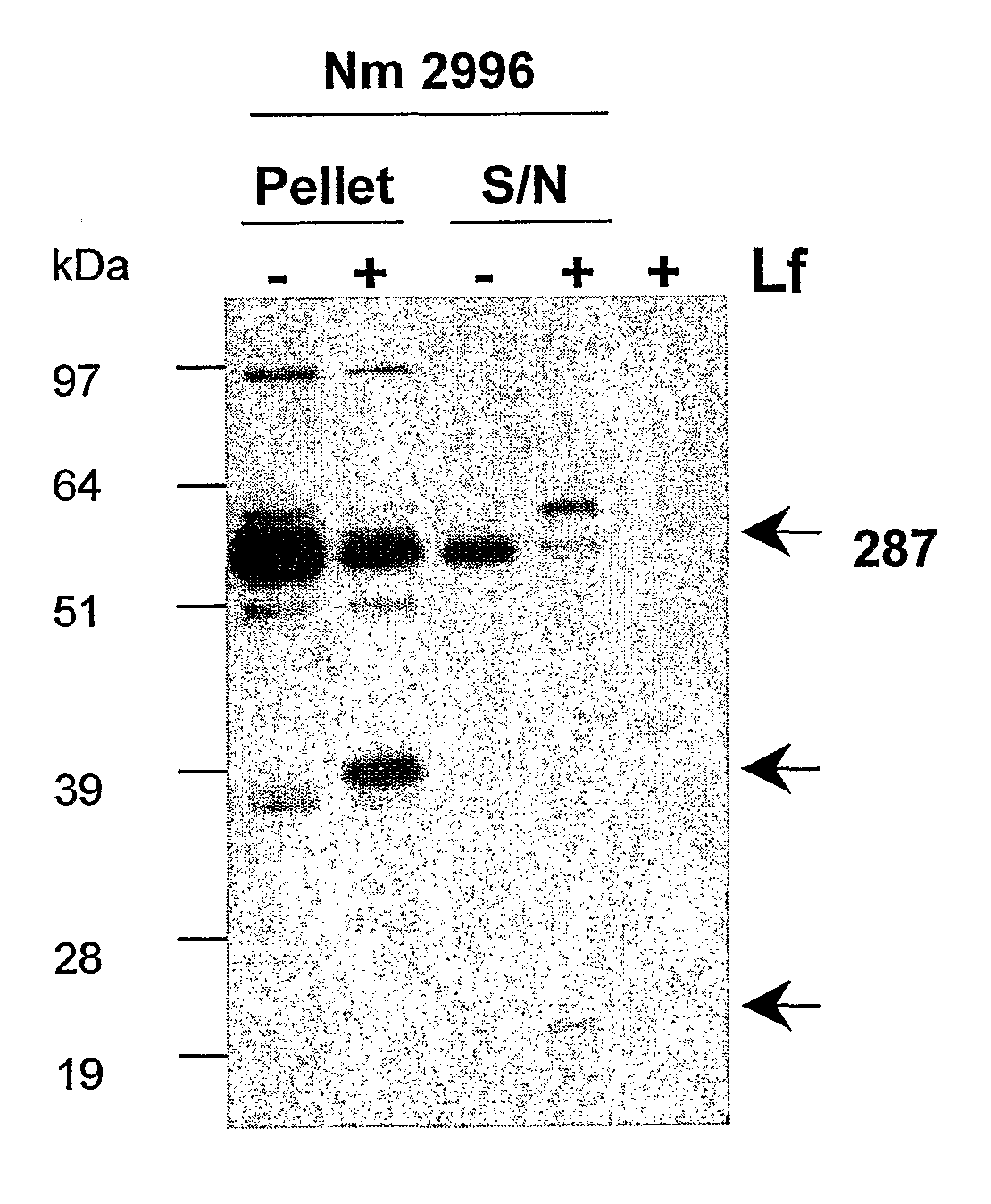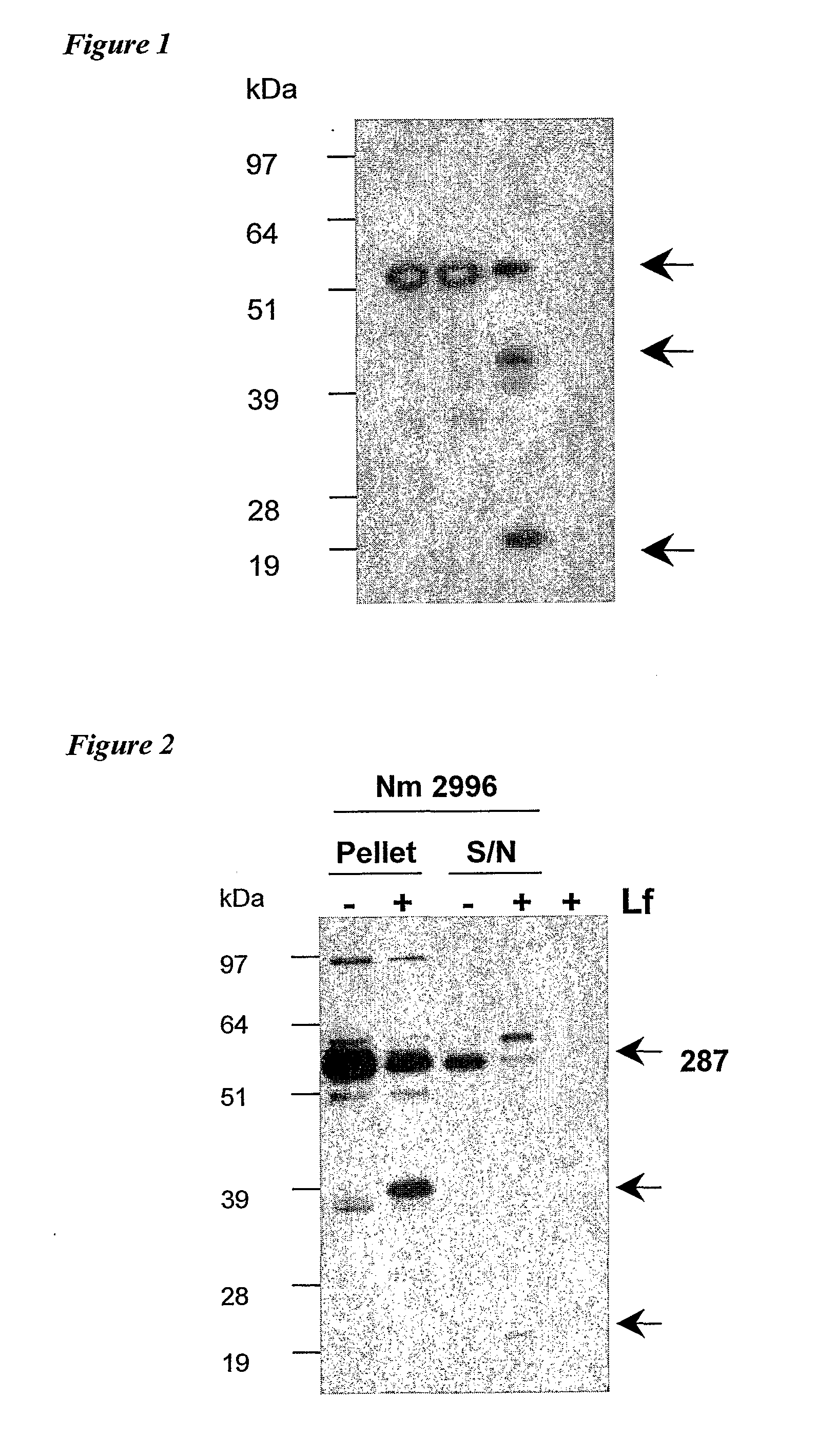Lactoferrin Cleavage of Neisserial Proteins
a technology of neisseria meningitidis and proteolysis, which is applied in the field of proteolysis, can solve the problems of unsuitable approach for immunizing against serogroup b, elusive vaccine, and limited protection
- Summary
- Abstract
- Description
- Claims
- Application Information
AI Technical Summary
Benefits of technology
Problems solved by technology
Method used
Image
Examples
Embodiment Construction
Protein 287
[0143]An example of a full length 287 sequence is given in SEQ ID NO: 2. 0.5 μg of 287 was mixed with 10 μg human lactoferrin in a 20 μl reaction volume. The mixture was incubated at 37° C. for 2 hours, and 10 μl of the mixture was then analysed by SDS-PAGE followed by a western blot using rabbit anti-287 (1:8000 dilution). The results are shown in FIG. 1. The lanes show: (1) 287 in Tris buffer at room temperature; (2) 287 in Tris buffer at 37° C.; (3) 287 in Tris buffer with lactoferrin at 37° C.; and (4) lactoferrin in PBS buffer at 37° C. Lane 3 shows definite cleavage of protein 287. The sizes of the fragments (˜40 kDa and ˜1 g kDa) are consistent with cleavage at the Arg-rich region in 287.
[0144]As a further control, the inhibitor decanoyl-RVKR-chloromethylketone was included in the reaction mixture. Cleavage was inhibited in the presence of this compound.
[0145]The effect of lactoferrin on meningococcal cells was also investigated. 1 ml of log phase culture (OD=0.5) ...
PUM
| Property | Measurement | Unit |
|---|---|---|
| Fraction | aaaaa | aaaaa |
Abstract
Description
Claims
Application Information
 Login to View More
Login to View More - R&D
- Intellectual Property
- Life Sciences
- Materials
- Tech Scout
- Unparalleled Data Quality
- Higher Quality Content
- 60% Fewer Hallucinations
Browse by: Latest US Patents, China's latest patents, Technical Efficacy Thesaurus, Application Domain, Technology Topic, Popular Technical Reports.
© 2025 PatSnap. All rights reserved.Legal|Privacy policy|Modern Slavery Act Transparency Statement|Sitemap|About US| Contact US: help@patsnap.com



